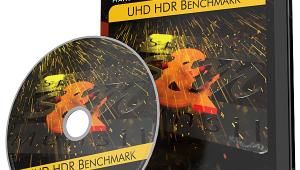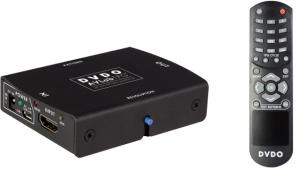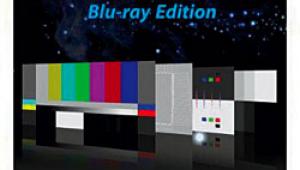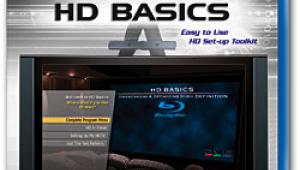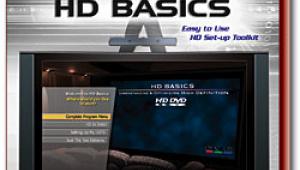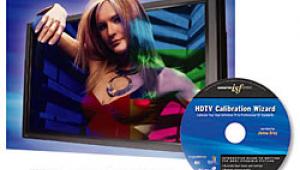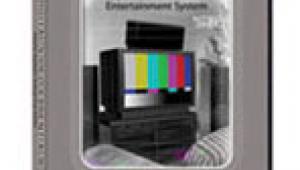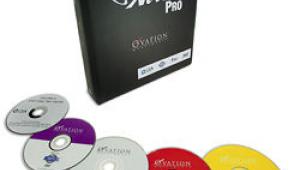TacT TCS mkII pre-pro/theater correction system Page 2
 However, any surround processor of reasonable quality can do effects—and who knows what the opening of a portal to the Seven Gods of Chaos is supposed to sound like anyway? As long as it blows us away, we're happy. Ultimately, any pre-pro's soundtrack performance succeeds or fails, for me at least, in its handling of the dialog and musical score.
However, any surround processor of reasonable quality can do effects—and who knows what the opening of a portal to the Seven Gods of Chaos is supposed to sound like anyway? As long as it blows us away, we're happy. Ultimately, any pre-pro's soundtrack performance succeeds or fails, for me at least, in its handling of the dialog and musical score.
Dialog intelligibility was never an issue with the TCS, from the quietest scenes to the densest mixes. Of course, not all film dialog is inherently natural-sounding, but I never had any complaints, given a reasonable level of quality from the source.
As for its way with film soundtrack music, the TCS got the most out of the best recordings. James Newton Howard's terrific score for Hidalgo (auditioned from the DTS track) is the best new film score I've heard so far this year, and through the TCS, it displayed all of the characteristics that distinguish the work of recording engineer Shawn Murphy: smooth, soaring, yet tactile strings; great depth and soundstaging; a comfortably laid-back, spacious sound; deep and rounded bass that can sometimes be just a little too full; and sonorous brass.
A very different sound distinguishes the late Jerry Goldsmith's fine score for Mulan. It's more up-front and a little bright, but its punchy, dynamic sound greatly enhances the film. The TCS did nothing to diminish it and did a fine job with the otherwise rather routine songs. In particular, the brief a cappella passage of "I'll Make a Man Out of You" demonstrated the processor's ability to keep the threads of a small chorus separate in a way that let me hear in and around the individual voices.
How did the TCS Theater Correction feature change the sound? With levels as closely matched as possible, my first impression was that the change was relatively subtle. That was not as surprising as it might sound. The measured response of the B&W speakers in my room—particularly the left and right 703s—isn't flat, but it's relatively smooth above the bass range. The corrected system sounded just a bit more forward in the low treble but with a little less sparkle higher up. Fig.1 shows a screen shot from the TCS software of the measured response of the left channel alone with this setup (green), and the correction curve (blue) that the TCS calculated based on the target curve I had established. The differences are small through most of the range, but the scale—about 4dB per large division—reveals that they are not insignificant
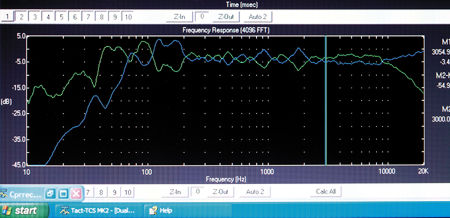
At the bottom end, the equalized response (mostly from the subwoofer, not shown in Fig.1) definitely sounded smoother than before. The change was not dramatic, but the bass was cleaner and less prone to the occasional boom I experienced when the bass in the soundtrack coincided with a room peak. The very deepest bass—which before had been slightly masked by the lumpier, more prominent upper bass—was now clearly audible.
Not all of these changes were subjectively better on all program material. The slightly more forward corrected sound removed some of the forgiving nature of the unequalized B&Ws. The highs had less sparkle—which bothered me more on music than on film soundtracks. Plus, the bass actually sounded more subdued, which was clearly due to the smoother response from the subwoofer.
While the improvement in bass clarity was obvious, those who like a little extra bass oomph for movies and a little more warmth with music will find it easy to increase the bass level of the equalized response while retaining a more linear low-frequency balance. I found that I had to increase the equalized subwoofer level by several dB before the low frequencies approached the sort of impact I hear from the best commercial movie houses here in Los Angeles. With the low bass peaks corrected by the TCS, though, I could add this boost without driving the subwoofer into obvious distortion or overloading the room.
You can, if you wish, create a number of different correction files for your system—perhaps one for music (adding, say, just a little sparkle or air, sometimes an elevation of as little as 1dB around 10–12kHz will be enough to do the trick); one for well-balanced soundtracks; and another to tame the top end with brighter movies—just as THX does with its re-equalization. With nine memories available for your correction files, you could set up all three of these options for three different primary listening positions.
Toward the end of the review period, after I'd mastered the software (well, sort of; see sidebar, "Power TacTics"), I performed a new calibration, with slightly modified target curves. Since I wasn't unhappy with the unequalized B&W speakers in the main channels, and their response in my system was reasonably smooth, I let the target curves follow the general trend of their au naturel in-room response, with only a few tweaks here and there. The subwoofer target was set to provide a gradual boost below 100Hz, increase to a maximum of +7dB at 30Hz, remain near that level at 20Hz, then drop rapidly below that to keep from overdriving the sub. Remember, if you push a subwoofer too hard at lower frequencies with external equalization, the added boost will be fighting the very low frequency rolloff that's built into all competent powered subs to protect the driver from self-destructing.
This setup worked extremely well for both music and movies, maintaining the desirable qualities of the B&Ws—excellent detail, a clean, uncolored midrange, sparkling but not overdone highs, fine imaging, and a huge soundstage—while fine-tuning the low-frequency response in a way that is almost impossible without equalization.
In fact, it was while I was experimenting with different setups that I heard the most dramatic effect of the TCS's room correction—and in 2-channel stereo, at that. From the left-of-center listening chair, with just the left and right channels, plus the sub, operating, the uncorrected 2-channel soundstage was clearly wrong. While the sound was pleasant enough for a casual listener, it was definitely not audiophile-friendly. The soundstage was fractured, and vocalists who should have been precisely located between the speakers sounded four-feet wide.
However, when I engaged the room correction—which not only adjusts for the differences in frequency response and some phase anomalies, but also the arrival time from each speaker—soloists suddenly locked into place. The improvement was stunning. It actually sounded as if the center speaker was operating (it was not), a phenomenon I have rarely experienced with just two front speakers unless I'm seated squarely in the center. While the soundstage wasn't quite the equal of what you'll get in the sweet spot with a good pair of speakers under the best of circumstances, it was surprisingly close. Nor was this phenomenon exclusive to the B&W speakers. I tried the same experiment with a pair of Dynaudio Special 25s (reviewed by Joel Brinkley in our October 2004 issue), with exactly the same result.
Conclusion
To get the maximum benefit from the TacT TCS mkII, the serious audiophile must learn to use it hands-on.Mastering TacT's Theater Correction room-compensation software, in particular, requires a lot of patience, determination, and a reasonable degree of computer savvy. However, it can pay off.
I was lucky—or not—in that the TCS made a significant difference in my system only in the bass. I also experienced a convincing demonstration of what it's capable of when circumstances are not so benign. The improvement it offers will not always be immediately obvious, but when it is, it will blow you away. The room-speaker equation is the Rubik's Cube of audio, and, sometimes, neither room treatments, setup, nor system changes can unravel it. The TacT TCS mkII can offer an elegant, effective solution.
- Log in or register to post comments
